Cigar Spirits: Five Bourbons Maker’s Mark Fans Should Try
26 Feb 2013
Maker’s Mark stunned many in the bourbon world recently by announcing it was reducing the proof of its bourbon from 90- to 84-proof. The bourbon was staying the same (the same mash bill aged the same number of years), except the ABV was dropping from 45% to 42%.
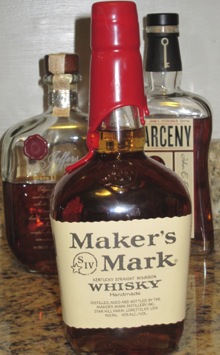 But when the backlash was more than expected, Maker’s Mark said “never mind” on the reduced proof. While that may have been the right decision, it leaves unresolved the problem that the watering down was meant to address: Demand for Maker’s Mark outpaces the supply of fully aged Maker’s (a problem that will take years to fix.)
But when the backlash was more than expected, Maker’s Mark said “never mind” on the reduced proof. While that may have been the right decision, it leaves unresolved the problem that the watering down was meant to address: Demand for Maker’s Mark outpaces the supply of fully aged Maker’s (a problem that will take years to fix.)
So fans of Maker’s Mark may have trouble finding their bourbon. Given Maker’s Mark’s “wheated” recipe, which emphasizes sweetness over spice, here are a few other bourbons to try if you can’t find that iconic red wax bottle, or if you just want to try something new.
Maker’s Mark 46 – Instead of going into to the bottling line, some Maker’s Mark is diverted to a second period of aging with a barrel using seared French oak staves. The result is a more complex, more complete bourbon. It’s $10-15 more per bottle, but well worth it in my opinion.
Old Fitzgerald – Whiskey writer Chuck Cowdery says he’s heard stories that Pappy Van Winkle gave Maker’s Mark creator Bill Samuels Sr. his Old Fitzgerald recipe for what would become Maker’s: “Put it in a fancy bottle and charge an arm and a leg for it.” Today Old Fitzgerald is made at Heaven Hill Distillery. The regular 80-proof gold label is slightly less refined than Maker’s but also half the price ($13).
Larceny – This newcomer, also from Heaven Hill, impressed me when I tried it. Just as sweet as Maker’s but richer in character, it’s more my style. And at $25 a bottle it’s the same price as Maker’s.
Old Weller Antique 107 – Weller is the “wheated” recipe from Buffalo Trace Distillery. At 107-proof, this is a bit hot straight. A splash of water opens it up nicely with banana, vanilla, and caramel notes. Also around $25 a bottle, it’s a great substitute for Maker’s Mark.
Jefferson’s Presidential Select 18 – This special 18-year-old bourbon is a pricy, limited bottling of some of the last remaining bourbon distilled at the Stitzel-Weller distillery, which closed in 1992 (meaning it’s the pretty much the same stuff that goes into the super-elusive Pappy Van Winkle 23). While $80-100 per bottle makes it a big step up in price, if you want to see what extra long aging can do to a “wheated” bourbon, this is the tasty result.
photo credit: Stogie Guys

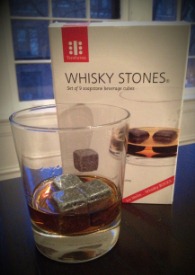 Some of us, myself included, prefer our whisky colder than room temperature. Others like to add a splash of water to round the edges and open up the flavors. And still others are looking for both.
Some of us, myself included, prefer our whisky colder than room temperature. Others like to add a splash of water to round the edges and open up the flavors. And still others are looking for both.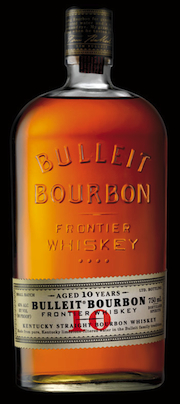 Needless to say, I was pleased to try a pre-release sample offered by Bulleit’s marketing people. Bulleit 10 (featuring a white label) is made at Four Roses Distillery, maker to some of my other go-to bourbons. It sells for $45 per bottle, a significant increase from original (orange label) which can be found for around $25.
Needless to say, I was pleased to try a pre-release sample offered by Bulleit’s marketing people. Bulleit 10 (featuring a white label) is made at Four Roses Distillery, maker to some of my other go-to bourbons. It sells for $45 per bottle, a significant increase from original (orange label) which can be found for around $25.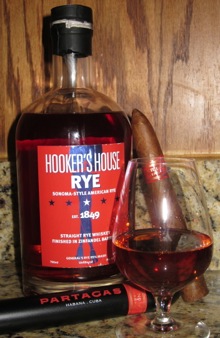 I’ve become skeptical of bourbon (or rye) bottled by companies that don’t distill their own whiskey, many of which just seem to slap their label on spirit they had no role in making. Hooker’s House, on the other hand, doesn’t hide the fact that they didn’t make the whiskey, but they do finish it in wine barrels that create a distinct spirit.
I’ve become skeptical of bourbon (or rye) bottled by companies that don’t distill their own whiskey, many of which just seem to slap their label on spirit they had no role in making. Hooker’s House, on the other hand, doesn’t hide the fact that they didn’t make the whiskey, but they do finish it in wine barrels that create a distinct spirit.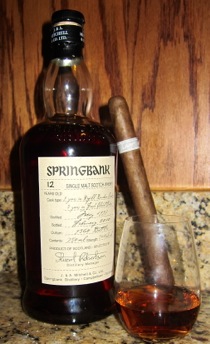 Springbank 10 is the distillery’s most widely available expression. It also makes a wide variety of other bottlings, including a “
Springbank 10 is the distillery’s most widely available expression. It also makes a wide variety of other bottlings, including a “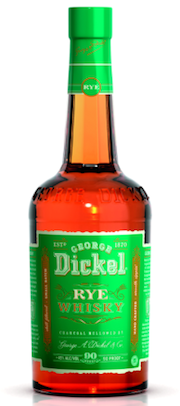 George Dickel’s parent company, Diageo, is the same as Bulleit’s, and the similarities between the ryes don’t end there. Both are distilled at Lawrenceburg Distillers Indiana (LDI) using the same rye-heavy recipe (95% rye and 5% malted barley). But of course whisky is far more than just the ingredients that go into it, and the Dickel rye takes its own distinct journey from barrel to bottle.
George Dickel’s parent company, Diageo, is the same as Bulleit’s, and the similarities between the ryes don’t end there. Both are distilled at Lawrenceburg Distillers Indiana (LDI) using the same rye-heavy recipe (95% rye and 5% malted barley). But of course whisky is far more than just the ingredients that go into it, and the Dickel rye takes its own distinct journey from barrel to bottle.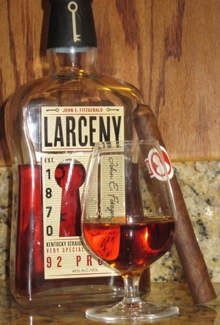 John E. Fitzgerald was a U.S. treasury agent who developed a taste for bourbon that he satisfied by stealing from the bonded warehouse he was given keys to in order to ensure taxes were properly collected. According to the
John E. Fitzgerald was a U.S. treasury agent who developed a taste for bourbon that he satisfied by stealing from the bonded warehouse he was given keys to in order to ensure taxes were properly collected. According to the  Patrick Ashby
Co-Founder & Editor in Chief
Patrick Ashby
Co-Founder & Editor in Chief Patrick Semmens
Co-Founder & Publisher
Patrick Semmens
Co-Founder & Publisher George Edmonson
Tampa Bureau Chief
George Edmonson
Tampa Bureau Chief